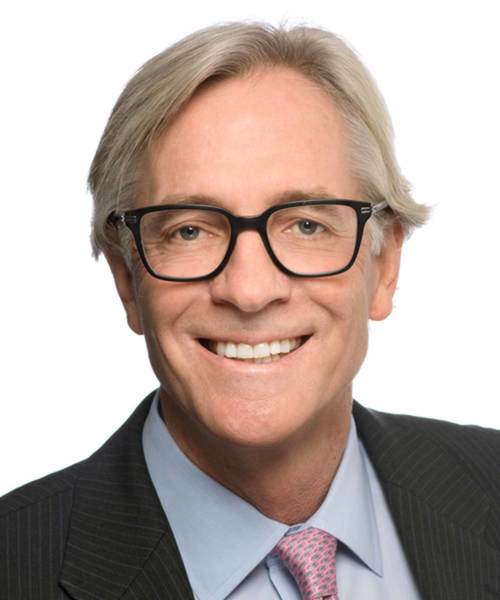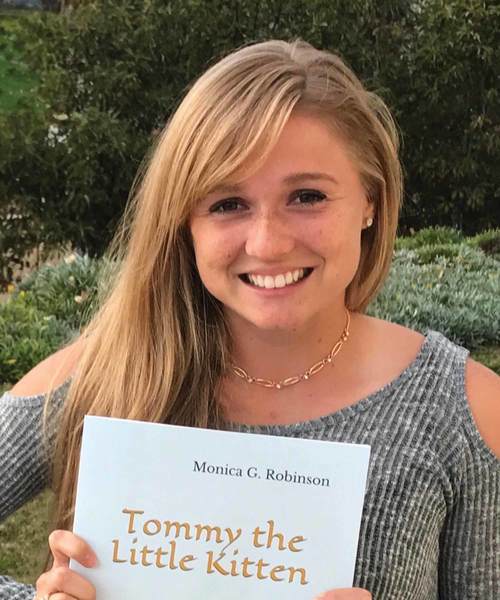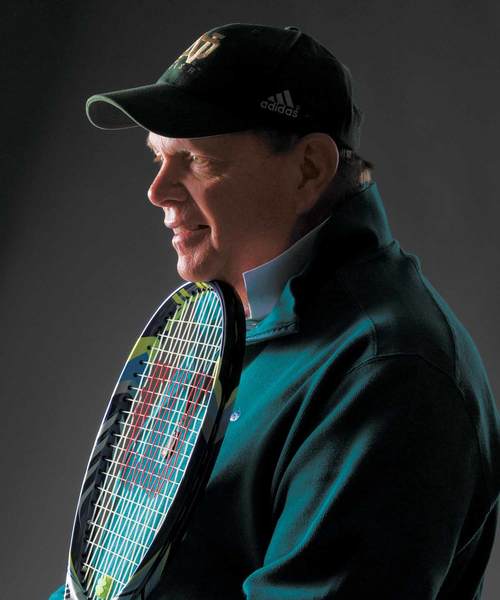
Brian Hainline
Making the Case for Sport
Before he was the NCAA’s first chief medical officer and a guiding light in the vital search to learn more about concussions . . .
Before he was the neurologist in charge of taking care of the best tennis players on the planet at the U.S. Open . . .
Before he wrote the rules for wheelchair tennis, enriching the game for thousands of handicapped players everywhere . . .
Before he co-authored a book that helped awaken the world to the scourge of doping in sport . . .
Before he was Dr. Brian Hainline . . .
He was Brian of Grace Hall—a philosophy major and varsity tennis player at Notre Dame. Let him tell the story about a weekend on the West Coast with the Irish in the 1970s, which started with a match against one of the top-ranked players in the country:
“It wasn’t even supposed to be close. I was supposed to be killed. It was probably the best match of my college career. People talk about being in the zone, I was definitely in the zone that day. The ball was coming to me like it was a watermelon. I remember looking around and seeing the mountains and just playing the match of my life. The crowd just kept getting bigger and bigger and it was like, ‘Who is this kid from Notre Dame playing this match?’”
So he won. Big upset. And the next day?
“The same good crowd came out, and they said, ‘You’ve got to see this kid from Notre Dame.’ But when you’re in the zone, it happens for a fleeting moment, and the next day I was back to reality and I just got crushed.”
Oh, well. Sport has its challenges. So does medicine. Put the two together, and you have a man’s dynamic journey, from home in Detroit, to campus in South Bend, to a hospital in New York, to the tennis complex at Flushing Meadows, to the high offices of the NCAA, hobnobbing with some of the deepest thinkers in medicine.
Since 2013, Hainline has been the first chief medical officer in the history of the NCAA, overseeing the Sport Science Institute, working on policy, development, research, outreach—anything and everything that addresses the health and safety of those who play the games.
“The essence of sport is really the student-athlete. That’s our most sacred asset,” he says. “If we’re going to do sport, we want to make sure we do it right.”
Lately, more than anything, that means trying to do something about concussions. He’s seen the headlines. Everyone has. Some suggest the future of football itself is at stake.
“I don’t know if it’s a question about football survival, per se, versus, ‘How do we respond to the concerns of football and make it safer?’ And is it possible to do that?” he says. “One of the difficulties is that there are a lot of speculations out there that are based on assumptions. The first thing we need to do is get really sound data to answer the question of what are we really dealing with, and what are we not dealing with?”
Which is why Hainline is up to his tennis elbow in research at the moment, with the largest study in history. The NCAA is working with the Department of Defense to look at 35,000 athletes and investigate more than 2,400 concussions, finding out the how and the why and the when.
“When we looked at it, we realized that most of the concussions in contact-collision sports actually happen in practice and not in competition. Practice is something we understand that we can modify easier than competition,” he says.
Safer games—football in particular—would be an achievement to brighten any man’s life story. But then, Hainline’s journey has never lacked for impact.
As a high school kid thinking maybe the ministry, maybe medicine, he wondered which college to choose. His brother Forrest, a Notre Dame graduate, mentioned a pre-professional program in liberal arts that would still allow for a track toward medicine. Plus, the family had a Catholic background. So . . .
“Notre Dame made all the sense in the world to me,” Hainline says.
He chose philosophy as a major—not exactly a highly traveled freeway to pre-med. “I will say,” he mentions, “I was out of the norm back then.” As for his memories of undergraduate days, there was the chemistry final for the esteemed professor, Emil T. Hofman.
“He interrupts the final exam and says, ‘I have a very important announcement to make.’ We were thinking, ‘Gee, is there a fire?’ He says, ‘We are naming our replacement coach for Ara Parseghian.’ So he interrupted our final exam to let us know there’s a new football coach, and I’m sitting there thinking, ‘This really has to be Notre Dame.’”
One other thing. The No. 1 player on the tennis team his freshman season was Rick Slager. Hainline still remembers Slager’s quick hands and how hard it was to get a passing shot by him at the net. Slager was also the starting quarterback on the Irish football team. The guy playing behind him was named Joe Montana.
Hainline went to medical school at the University of Chicago, where he fell in love with neurology. Then on to his residency at New York Hospital-Cornell Medical Center. Funny the doors that were opened by all those serves and forehands at Notre Dame.
“Fred Plum (the head of the neurology program at Cornell) was widely feared because he was such a strict disciplinarian and kind of hard core,” Hainline says. “They only took five people, and all the people they took in that year had done a lot of research, except for me. I had done none. But I remember during my interview, he spent 10 minutes just sizing me up, and then he spent the rest of the hour talking about tennis and saying, ‘How did you do a double major at a school like Notre Dame and play tennis? How did you fit that into your life?’”
Hainline’s answer: “Basically it was a life of discipline and devotion and passion.”
Plum said he’d found exactly the kind of person he wanted and offered Hainline the position on the spot.
“In a way, it was through being a student-athlete that I got into my dream residency program,” Hainline says. “He was a frustrated tennis player. He would invite me to his house in Long Island and play tennis. That was fine because he would invite the other residents out there to rake the leaves.”
The tennis-medicine combo would soon take Hainline another direction. He had done some work at the U.S. Open—and in 1991 the phone rang.
“Out of the blue I got this call from the U.S. Open and they said, ‘We’d like you to be our next chief medical officer.’ I was totally blown away. I said, ‘I don’t know if I can be the chief medical officer, I’m a neurologist.’ At that time, it was always an orthopedic surgeon.”
The Open wanted Hainline. He was there for 16 years—a doctor, a tennis fan and, at the beginning, something of a mediator.
“The thing I remember the most about the U.S. Open, when I started, the ATP and the WTA and the USTA and the ITF, they really weren’t on good speaking terms. I remember bringing everyone in the room and saying, ‘Look, at least from a medical point of view, how can we not all be on the same page?’”
Soon, they were. With that accomplished, he could focus on the players themselves.
“We tend to worship the stars, but that’s really a dangerous thing to do. It sets them up in the wrong way. I got to know them as human beings, and when you’re taking care of them medically, you let them know you’re listening to them and you hear their struggles. They really appreciate that.
“We had very strict rules. No one was allowed to ever ask for an autograph. All of our encounters, we considered them sacred space. The other thing was understanding you’re at a major event and it’s international TV, so when a player’s down on the court, you basically have three minutes to figure it out. You learn to think very quickly on your feet, and sometimes there were really intense moments.”
Such as 1996 when the world’s top player, Pete Sampras, was vomiting on the court late in a five-set match with Alex Corretja.
“I remember standing there. We had three scenarios worked out. There was an ambulance standing by, and while the match was going on, we made certain we rehearsed all three scenarios. Based on what was going to happen, we were going to take immediate action. He ended up finishing the match and won. I was with the ATP athletic trainer, and we actually walked Pete off the court and took him right away into one of the rooms we had set up. We ended up IV hydrating him all night.”
Hainline had his favorites. What tennis fan wouldn’t? Lindsay Davenport, for instance. “One of the nicest people I’ve ever met,” he says. “She would see me holding our child and would come running over and lift her up.”
Also Kim Clijsters. “Before her big matches, she actually asked if she could babysit our daughter. There was this babysitting room, and she would be back there and that’s how she would decompress, by playing with our daughter.”
Father, husband, neurologist, tennis chief medical officer. Anything else?
Oh, yeah. The book.
Troubled by the lack of academic literature about doping, Hainline teamed with Gary Wadler in 1989 to write “Drugs and the Athlete.” It was the first textbook that dealt with the issue, and the narrative on the subject would never be the same. He eventually wrote the doping rules for the International Tennis Federation.
“That became a journey. The book was published and it ended up really being very influential in the formation of the World Anti-Doping Agency,” he says. “We saw what was happening in sport. The culture had become almost that if you weren’t doping, you weren’t going to make it. It was just sad to see that sport had become more of a contest in pharmacology. It was important to do everything possible to try to help the world understand the seriousness of doping.
“It was a very interesting chapter in my life. I was very, very heavily involved in the doping matters of the world.”
Involved. Yep, that’s the word for Brian Hainline.
There was the New York State Athletic Commission, working with medical issues in boxing. “I didn’t know a lot about boxing. In fact, I never really liked boxing. They said the sport is not going to go away, so let’s try to get some good thinking involved in it. I did it somewhat out of guilt, because I was asked to do it. That good old-fashioned Catholic guilt.”
There was the stint as chief medical officer for the U.S. Tennis Association. There was bringing some simplicity and conformity to the rules of wheelchair tennis. So many turns in his road—and all of them meant something to him.
In late 2012, another big turn led to the NCAA.
“I thought it was potentially an incredible opportunity. I became convinced when I was interviewing for the job that they were taking this position very, very seriously. In other words, they weren’t just creating a position for someone to be a rubber stamp on policy. I was so impressed during the interview, I’ll always remember saying, ‘I don’t think there’s anything wrong with the NCAA, except that the NCAA is part of society. It’s society that needs to get sport right.’
“I really believed at the time that the NCAA was in a unique position—more than any other governing body in the world, really—to take a leadership position both morally and scientifically.”
So Hainline went to work on what might be the biggest challenge of his life, trying to herd America’s collegiate athletic programs into a unified force for health. He has visited more than a hundred schools, though that trekking is not without a job perk. He occasionally gets to take the court with the tennis team during his visit, since his game is “still good enough that I can work out with the teams and hold my own, as long as I’m not running around too much and not playing singles.”
Not bad for a guy turning 62. But back to the job.
“I knew I was going to have to focus on concussions, but we’re spending just as much time on mental health, cardiovascular issues, overuse injuries and sleep issues. It’s extended way beyond concussions into a lot of strategic areas that are necessary to really do sport right from a public health perspective.
“I think there’s this genuine wish to get things right. It’s way, way exceeded my expectations.”
So Dr. Brian Hainline understands what he wants to do. And more important, why. He can say a lot about that.
“It gets back to the fact that sport gave me so much in my life. It’s just giving back to something I love, and I believe it’s actually necessary for the survival of our country. We have to get sport right, and we have to be a country that is filled with people who are athletes. I say that from a very serious point of view because right now the United States has become one of the most physically illiterate countries in the developed world.
“Half of the military servicemen and women who want to serve for our country are unable to because they’re so physically illiterate. We’ve taken away the opportunity from a lot of grade school and high school kids because we’ve eliminated physical education from the curriculum, and it’s not right because sport takes you to a completely different place.
“Nelson Mandela has said that much more wisely than I could ever say it. He said you can measure a society by how it treats sport. In sport, everyone goes on the playing field and they’re equal. That’s what I got from it. If I can make sport a little bit better through the work that we’re all joined together at the NCAA, then it makes me happy.”
He is still a clinical professor in neurology, holding sessions twice a month at Indiana and once a month at New York University, all volunteer. There are also the two daughters, one son, two grandkids, a wife of 38 years. And a passion for one subject that has never wavered.
Visit his home, and what do you find? “A book shelf with all my philosophy books. They’re really the core of my life.”
So the years at Notre Dame live on for the man of medicine and sport, who has worked to do so much for both.
“Shockingly, one might say this for a Catholic school, Notre Dame taught me to question everything. But at the end of the day, through all those questions and nourishing, you sort of develop a really sound ethical foundation that has never left me.
“What I remember most from Notre Dame is that it awakened me and that awakening has really never gone away. It’s really become the most important force in my life.”
He still has a pretty mean backhand, too.

